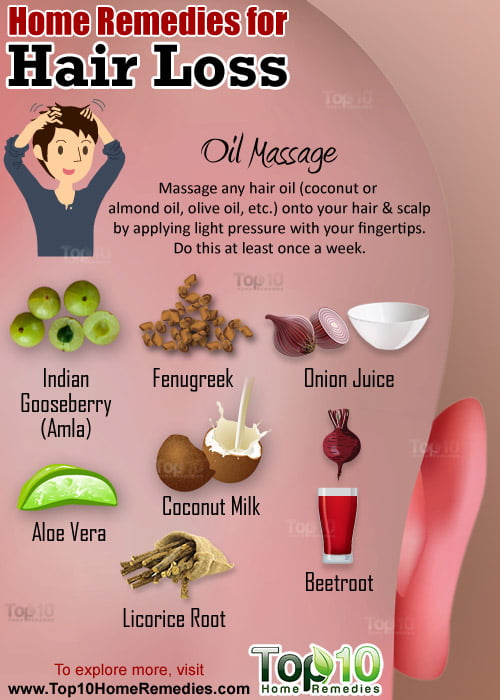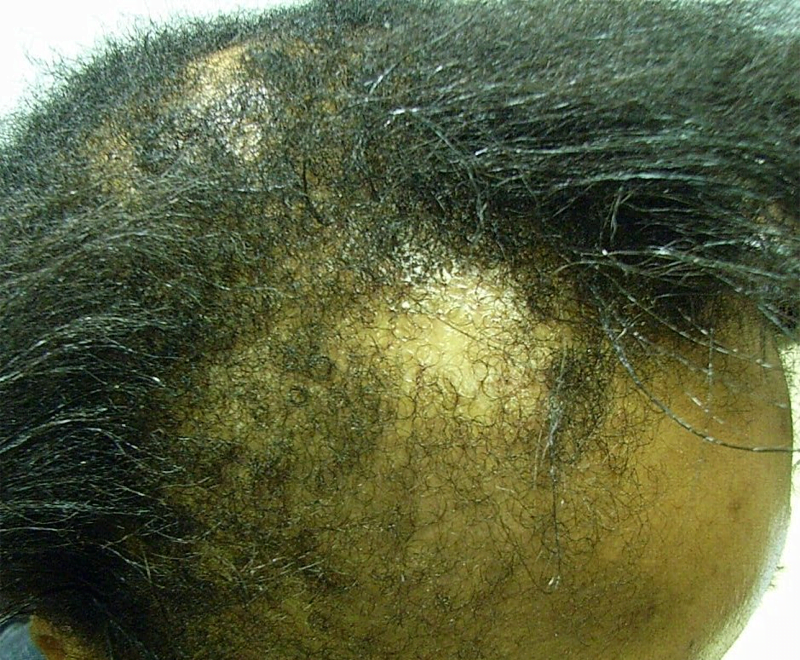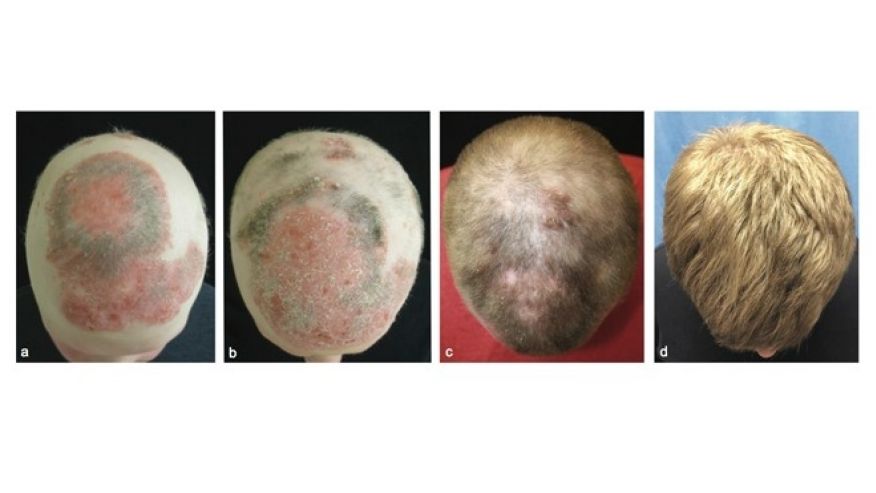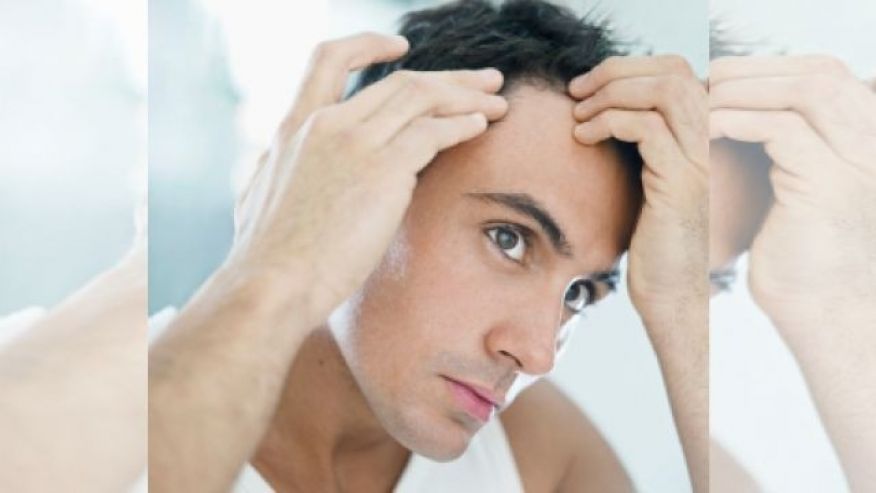Female hair loss can happen for a variety of reasons, such as genetics, changing hormone levels, or as part of the natural aging process.
There are various treatment options for female hair loss, including topical medications, such as Rogaine. Other options include light therapy, hormone therapy, or in some cases, hair transplants.
Eating a nutritious diet and maintaining a healthy lifestyle can also help keep hair healthy.
 Share on Pinterest
Share on PinterestThe Food and Drug Administration (FDA) approves Minoxidil to treat hair loss. Sold under the name Rogaine, as well as other generic brands, people can purchase topical Minoxidil over-the-counter (OTC). Minoxidil is safe for both males and females, and people report a high satisfaction rate after using it.
Minoxidil stimulates growth in the hairs and may increase their growth cycle. It can cause hairs to thicken and reduce the appearance of patchiness or a widening hair parting.
Minoxidil treatments are available in two concentrations: the 2% solution requires twice daily application for the best results, while the 5%Trusted Source solution or foam requires daily use.
While the instinct may be to choose the stronger solution, this is not necessary. Studies posted to the International Journal of Women’s DermatologyTrusted Source and the Journal of the American Academy of DermatologyTrusted Source found that 2% minoxidil was effective for females with androgenetic alopecia, or pattern baldness.
If a person finds success with minoxidil, they should continue using it indefinitely. When a person stops using minoxidil, the hairs that depended on the drug to grow will likely fall out within 6 monthsTrusted Source.
Side effects from minoxidil are uncommonTrusted Source and generally mild. Some females may experience irritation or an allergic reaction to ingredients in the product, such as alcohol or propylene glycol. Switching formulas or trying different brands may alleviate symptoms.
Some females may also experience increased hair loss at first when using minoxidil. This typically stops after the first few months of treatment as the hair gets stronger.
Additionally, misapplying minoxidil or applying it to the forehead or too much of the neck may cause hair growth in these areas. Only apply minoxidil to the scalp to avoid these side effects.
Minoxidil is available to purchase in stores and online.
Low-level light therapy may not be sufficient treatment for hair loss on its own, but it may act to amplify the effects of other hair loss treatments, such as minoxidil.
A trial posted to the Indian Journal of Dermatology, Venereology, and Leprology found that compared to control groups, adding low light therapy to regular 5% minoxidil treatment for androgenetic alopecia helped improve the recovery of the hairs and the participants’ overall satisfaction with their treatment.
Researchers will need to carry out further research to help strengthen these results.
The drug ketoconazole may help treat hair loss in some cases, such as androgenetic alopecia, where inflammationTrusted Source of the hair follicles often contributes to hair loss.
One review posted to the International Journal of Women’s DermatologyTrusted Source noted that topical ketoconazole might help reduce inflammation and improve the strength and look of the hair.
Ketoconazole is available as a shampoo. Nizoral is the best known brand and is available for purchase over the counter and online. Nizoral contains a low concentration of ketoconazole, but stronger concentrations will require a prescription from a doctor.
Some females may also respond to corticosteroid injections. Doctors use this treatment only when necessary, for conditions such as alopecia areata. Alopecia areata results in a person’s hair falling out in random patches.
According to the National Alopecia Areata Foundation, injecting corticosteroids directly into the hairless patch may encourage new hair growth. However, this not may prevent other hair from falling out. Topical corticosteroids, which are available as creams, lotions, and other preparations, may also reduce hair loss.
Early evidence suggests that injections of platelet-rich plasma may also help reduce hair loss. A plasma-rich injection involves a doctor drawing the person’s blood, separating the platelet-rich plasma from the blood, and injecting it back into the scalp at the affected areas. This helps speed up tissue repair.
A recent review posted to Aesthetic Plastic SurgeryTrusted Source noted that most studies suggest that this therapy reduces hair loss, increases hair density, and increases the diameter of each hair.
However, because most studies up until now have been very small, the review calls for more research using platelet-rich plasma for androgenic alopecia.
If hormone imbalances due to menopause, for example, cause hair loss, doctors may recommend some form of hormone therapy to correct them.
Some possible treatments include birth control pills and hormone replacement therapy for either estrogen or progesterone.
Other possibilities include antiandrogen medications, such as spironolactoneTrusted Source. Androgens are hormones that can speed up hair loss in some women, particularly those with polycystic ovary syndrome, who typically produce more androgens.
Antiandrogens can stop the production of androgens and prevent hair loss. These medications may cause side effects, so always talk to the doctor about what to expect and whether antiandrogens are suitable.
In some cases where the person does not respond well to treatments, doctors may recommend hair transplantationTrusted Source. This involves taking small pieces of the scalp and adding them to the areas of baldness to increase the hair in the area naturally. Hair transplant therapy can be more costly than other treatments and is not suitable for everybody.
Some minor hair loss may happen due to clogged pores on the scalp. Using medicated shampoos designed to clear the pores from dead skin cells may help promote healthy hair. This may help clear minor signs of hair loss.
Eating a healthful diet may support normal hair growth, as well. Typically, a healthful diet will contain a wide variety of foods, including many different vegetables and fruits. These provide many essential nutrients and compounds that help keep skin and hair healthy.
Learn more about diet and other home remedies for hair growth here.
Iron levelsTrusted Source may also play a role in hair health. Females with hair loss can see their doctor for a blood test to check if they have an iron deficiency. A doctor may advise consuming an iron-rich diet or taking an iron supplement.
Learn more about the link between iron deficiency and hair loss here.
Massaging the scalp may increase circulation in the area and help clean away dandruff. This helps keep the scalp and hair follicles healthy.
The most common cause of hair loss in females is androgenetic alopecia, which has strong links to genetics and can run in families.
According to the International Journal of Women’s DermatologyTrusted Source, hair loss from androgenetic alopecia may start at a young age. Some females may begin losing their hair in their late teens or early twenties, though most females may not begin to lose their hair until their 40s or older.
Both males and females can develop androgenetic alopecia, but they experience it in different ways. Males tend to experience a receding hairline or bald spot on top of their head, while females tend to present different symptoms.
In females, the parting at the center of the hair often becomes more defined or wider. Females may also experience thinning hairs, and hair may appear more thin or patchy overall.
These symptoms are due to a thinning of each hair strand. The hairs also have a shorter life cycle, and hairs only stay on the head for a shorter period.
Female pattern hair loss is a progressive condition. Females may only notice a slightly wider parting in their hair at first, but as symptoms progress, this can become more noticeable.
Other forms of alopecia, such as alopecia areata, may cause one or more patches of complete baldness.
Other factors may play a role in hair loss, such as inflammatory conditions that affect the scalp and hormone imbalances. Doctors may want to investigate these possible causes if the person does not respond to typical treatments.
While losing hair at a young age may be concerning, hair loss is a reality for many people as they age. One study posted to the Indian Journal of Dermatology, Venereology, and Leprology noted that up to 75% of females would experience hair loss from androgenetic alopecia by the time they are 65 years old.
While many females look for ways to treat hair loss while they are young, at some point, most people accept hair loss as a natural part of the aging process.
Some people may choose to wear head garments or wigs as a workaround to hair loss. Others work with their aging hair by wearing a shorter haircut that may make thin hair less apparent.
Hair loss can affect both males and females. Hair loss in females may have a range of causes, though the most common is androgenetic alopecia.
There are a variety of treatments for hair loss for females, including OTC hair loss treatments, which are generally effective. Anyone experiencing hair loss should visit their doctor who can diagnose any underlying factors.
If a doctor suspects there is another underlying cause or the person does not respond well to OTC treatments, they will look into other treatment options.
















